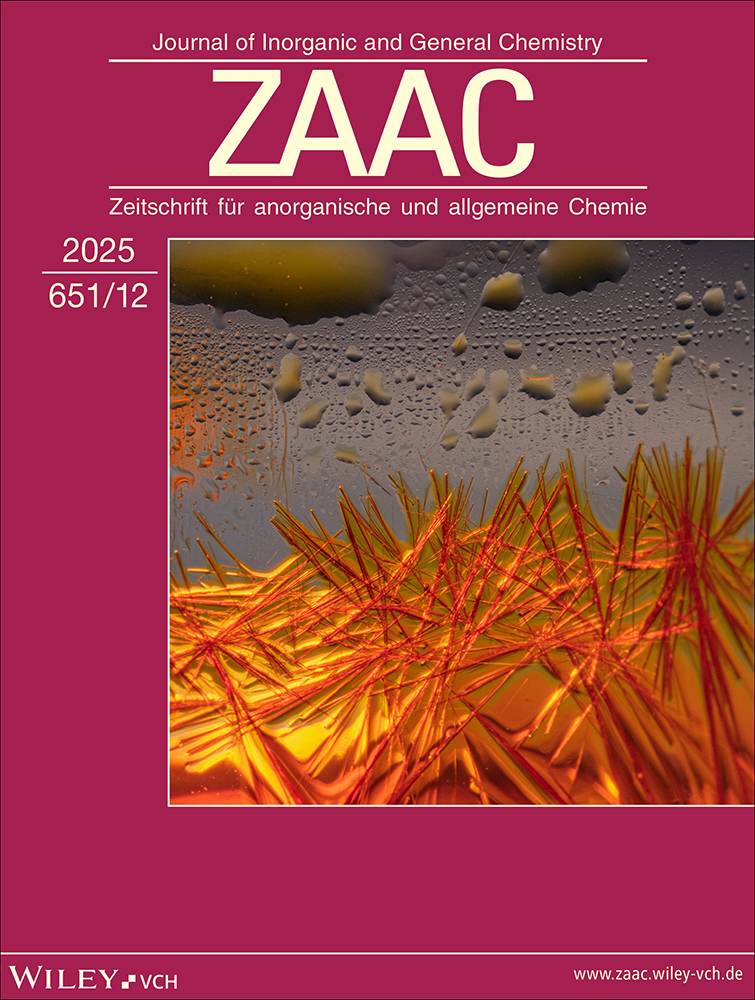31P- und 195Pt-NMR-Untersuchungen an Diplatin(I)-Komplexen des Typs [Pt2(μ-SPR2)2L2] (L = PR3, PhP(OPh)2, P(OPh)3, CNR)†
VIII. Mitteilung aus der Reihe Sekundäre Phosphinochalkogenide; VII. Mitteilung s.
Abstract
deEs werden 31P-, 195Pt-chemische Verschiebungen und 195Pt31P-Kopplungskonstanten einer Reihe von doppelt verbrückten Diplatin(I)-Komplexen mitgeteilt. 31P-koordinationschemische Verschiebungen der ternären Liganden von Komplexen des Typs [Pt2(μ-SPR2)2(P′R3′)2] und verschiedene Kopplungskonstanten werden stark von der π-Akzeptor-Stärke dieser Liganden beeinflußt. J(195P–195Pt) wird innerhalb der Reihe der untersuchten Komplexe mit wechselndem Vorzeichen gefunden. Aus den großen Werten von 2J(Pt–P′) und 3J(P′P′) sowie der ungewöhnlich starken Temperaturabhängigkeit einiger Kopplungskonstanten und anderen NMR-Eigenschaften wird auf Paramagnetismus dieser Komplexe aufgrund thermischer Singlett-Triplett-Anregung geschlossen, der in vorläufigen EPR-Messungen gefunden und durch EHT-Rechnungen gestützt wird. Die chemische Stabilität des doppelt verbrückten Kerns, die koordinationschemischen Verschiebungen der Brückenphosphoratome und EHT-Rechnungen weisen auf Aromatizität der [Pt2(μ-SPR2)2](M–M)-Einheit dieser Komplexe hin.
Abstract
en31P and 195Pt N.M.R. Investigations on Diplatinum (I) Complexes of the Type [Pt2(μ-SPR2)2L2] (L = PR3, PhP(OPh)2, P(OPh)3, CNR)
31P-, 195Pt-chemical shifts and 195Pt–31P- resp. 31P–31P-coupling constants of a series of doubly bridged diplatinum(I) complexes are reported. 31P-coordination chemical shifts of the terminal ligands of complexes of type [Pt2(μ-SPR2)2(P′R3′)2] and some of the various coupling constants are strongly influenced by the π-acceptor strength of these ligands. J(195Pt–195Pt) is found to change the sign among the series of complexes investigated. Thermal singlett triplet exitation giving rise to the paramagnetism of these complexes observed by preliminary EPR-measurements and confirmed by EHT-calculations is deduced from the large values of 2J(P–P′) and 3J(P′P′) as well as the unusually high temperature dependence of some coupling constants and other NMR features. The chemical stability of the doubly bridged core, the coordination shifts of the bridging phosphorus atoms and EHT-calculations suggest a view of aromaticity of the [Pt2(μ-SPR2)2](M–M) unit of these complexes.




